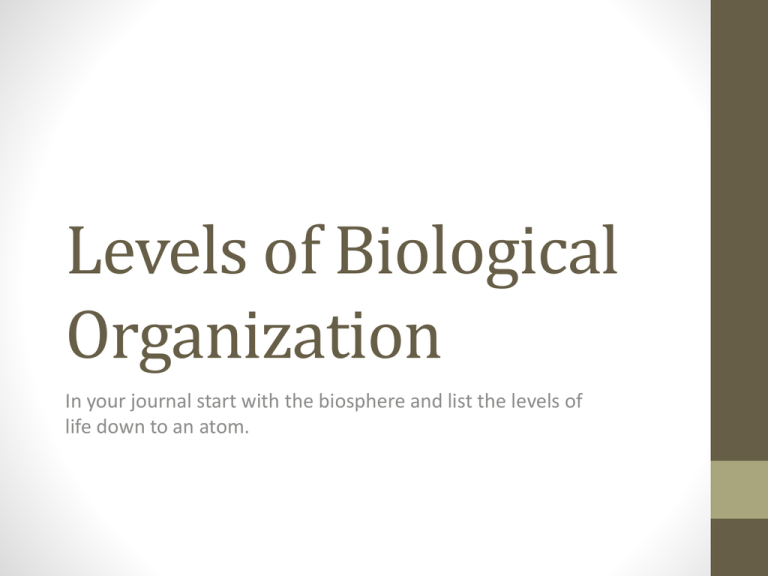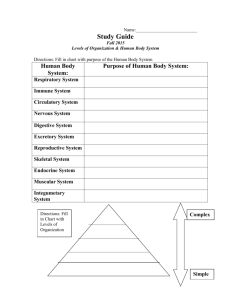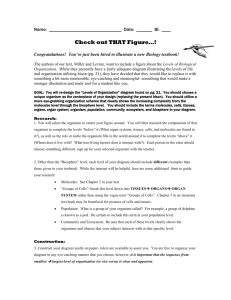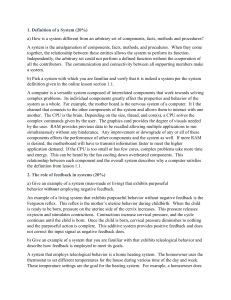Levels of Biological Organization
advertisement

Levels of Biological Organization In your journal start with the biosphere and list the levels of life down to an atom. Play the game! • Levels of Life Card Game… • http://www.ldsd.org/Page/1436 Biosphere • All of the life on earth and all of the places where life exists Ecosystem (and Biomes) • Consists of all the living things in a particular area, along with all the nonliving components of the environment with which life interacts, such as soil, water, atmospheric gases, and light • Biome – any of the world’s major ecosystems Community • All of the living organisms inhabiting a particular area Population • Consists of all the individuals of a species living within the bounds of a specified area Organism • An individual living thing Organ System • A group of organs that cooperate in to carry out a particular function for the organism Organ • A body part that carries out a particular function in the body Tissue • A group of cells that work together to preform a specialized function Cells • Life’s fundamental unit of structure and function • unicellular • multicellular Organelles • Functional components within a cell Molecules and Atoms • Molecule - A chemical structure consisting of two or more small chemical units called atoms • Atom – the smallest unit of matter that retains the chemical properties of an element So what do all of these levels of life allow for.... • Emergent Properties – due to the arrangement and interactions of parts as complexity increases an organisms is capable of specialized functions (i.e. oxidative phosphorylation) Does emergence only stop at the organism level? • No –populations can work together to carryout complex activities – think of a colony of Ants; emergent properties are present at all levels of life Reductionism vs. Systems • Reductionism Reducing complex systems to simpler components that are more manageable to study Reductionism could allow for the discovery of a drug that lowers blood pressure – Systems biology would make sure that the drug did not have an adverse affect on the rest of the body. • Systems Biology – attempts to model the dynamic behavior of whole biological systems based on a study of the interactions among the system’s parts










